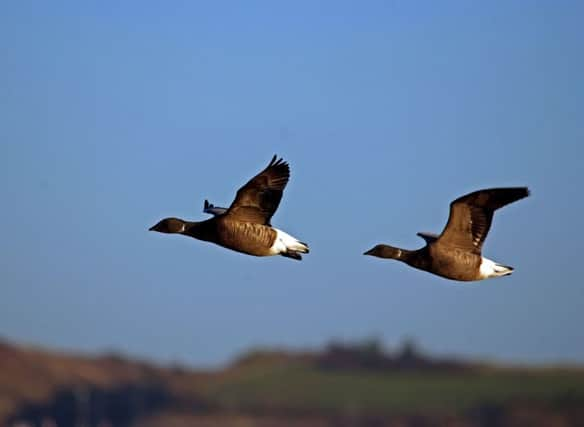LIANNE DE MELLO: Wintering geese and owls are arriving


They spend their winters in our sheltered estuaries and coastal marshes on the east and south coasts, including the Solent – and is the Wildlife Trust’s top wildlife experience for November.
Their epic journey takes them along the northern European coastline, across frozen land, through gale force winds and over stormy seas.
Advertisement
Hide AdAdvertisement
Hide AdThe annual round trip means a single goose can fly more than 135,000 miles in its lifetime between its winter and summer homes.
Like other geese, they fly in a long V-shaped formation called skeins.
The Brent goose has distinctive markings, and is easy to spot. It has a grey-brown back, and a black neck and head with just a small white patch on the neck.
Young Brent geese can be distinguished by the white bars on their backs.
Advertisement
Hide AdAdvertisement
Hide AdAbout the same size as a mallard duck, Brent geese are our smallest goose.
Large flocks collect together, a continual conversation of ronking and cronking as they discuss the best feeding places and the best time to set off.
In spring they gather together in their largest numbers, preparing to make the marathon journey back up to Arctic Russia.
They breed over the summer in the Russian tundra and do particularly well in years when there’s a good population of lemmings, meaning arctic foxes do not need to hunt geese to feed.
Come autumn, they embark on their journey back to Britain.
Advertisement
Hide AdAdvertisement
Hide AdTo spot Brent geese, visit coastal marshes like our Farlington Marshes and Lymington and Keyhaven nature reserves, and keep your eyes and ears peeled. Wrap up warm and pay homage to these long-haul travellers.
Short-eared owls have returned to Farlington Marshes nature reserve in Portsmouth, for the winter months.
These amazing birds spend their winters hunting in marshes and coastal grasslands, including those on the Hampshire coast.
You too can watch these charismatic birds of prey hunting during the day – visit Farlington in the late afternoon during dry weather and keep your eyes peeled.
For more information on our nature reserves, go to hiwwt.org.uk.
Lianne De Mello is from Hampshire and Isle of Wight Wildlife Trust